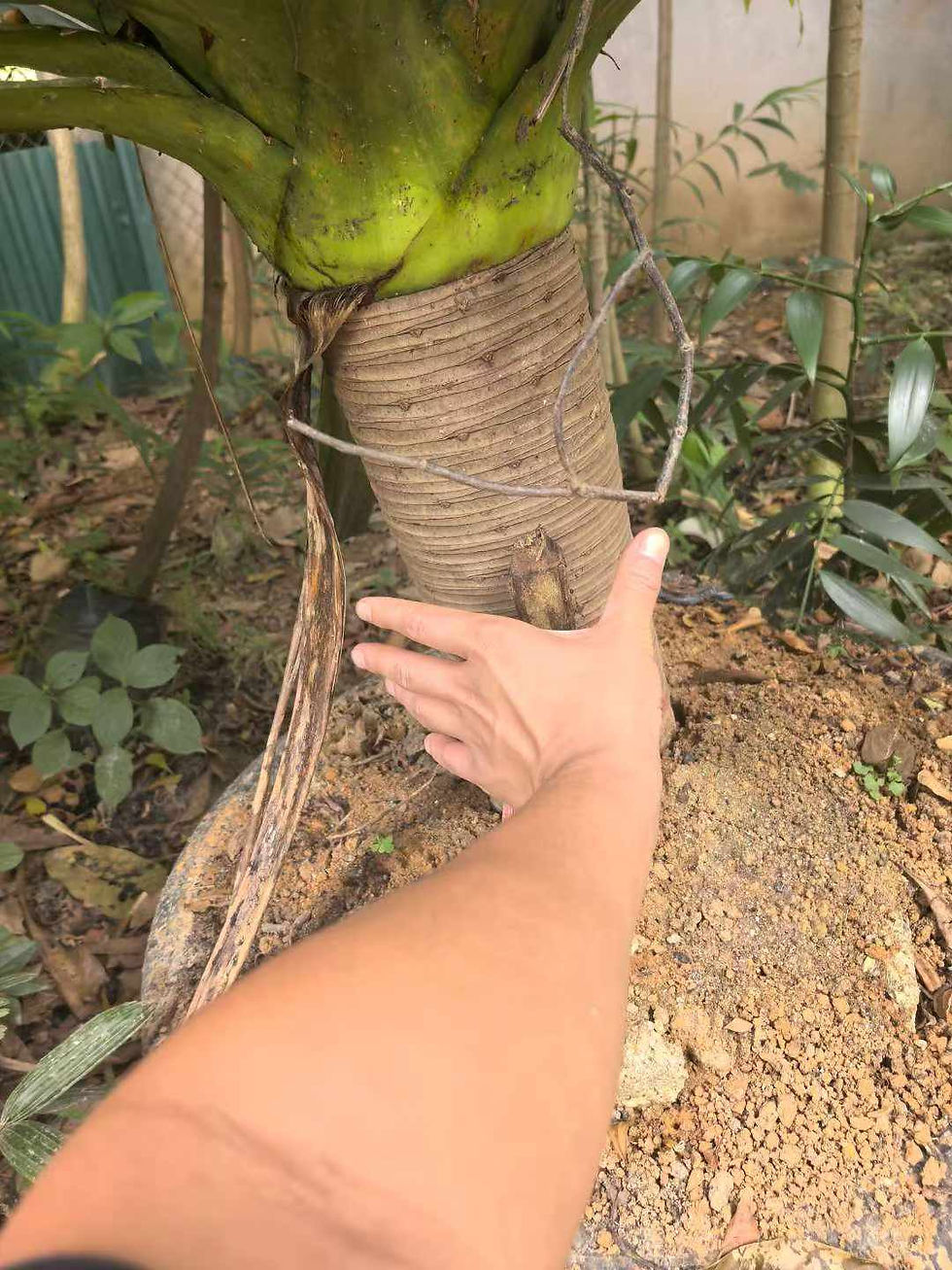Cajanus cajan seeds mature in Oct.Cajanus cajan (Linnaeus) Huth, Helios. 11: 133. 1893.木豆 mu dou
Cytisus cajan Linnaeus, Sp. Pl. 2: 739. 1753; Cajanus bicolor Candolle; C. cajan var. bicolor (Candolle) Purseglove; C. cajan var. flavus (Candolle) Purseglove; C. flavus Candolle; C. indicus Sprengel; C. indicus var. bicolor (Candolle) Kuntze; C. indicus var. flavus (Candolle) Kuntze; C. indicus var. maculatus Kuntze.
Shrubs, erect, 1-3 m tall. Branchlets gray pubescent. Leaves pinnately 3-foliolate; stipules small, ovate-lanceolate, 0.2-3 mm; petiole 1.5-5 cm, sparsely pubescent; stipels extremely small; petiolules 1-5 mm, hairy; leaflets lanceolate to elliptic, 2.8-10 × 0.5-3.5 cm, papery, abaxial surface densely pubescent and with inconspicuous yellow glands, adaxial surface pubescent, apex acute or acuminate, usually mucronate. Raceme 3-7 cm; peduncle 2-4 cm; few flowers terminal or almost terminal; bracts ovate-elliptic. Calyx campanulate, 5-7 mm; lobes triangular or lanceolate, pubescent. Corolla yellow, ca. 3 × calyx in length; standard suborbicular, with inflexed auricle; wings slightly obovate, with short auricle; keel apex obtuse, slightly inflexed. Ovary hairy; ovules several; style long, linear, glabrous; stigma capitate. Legume linear-oblong, ± inflated, 4-8.5 × 0.6-1.2 cm, dun pubescent, apex beaked, acuminate, long mucronate. Seeds 3-6, gray, sometimes with brown spots, subspherical, ca. 5 mm in diam., slightly compressed; strophiole absent. Fl. and fr. Jan-Nov. 2n = 22.
Roadsides, hills; 100-900 m. Fujian, Guangdong, Guangxi, Guizhou, Hainan, Hunan, Jiangxi, Sichuan, Taiwan, Yunnan, Zhejiang [probably originally from tropical Asia, now cultivated worldwide].
Cajanus cajan is used for food ("Pigeon Pea"), herbage, green fertilizer, and medicine. It is particularly valued in areas of low erratic rainfall.

































